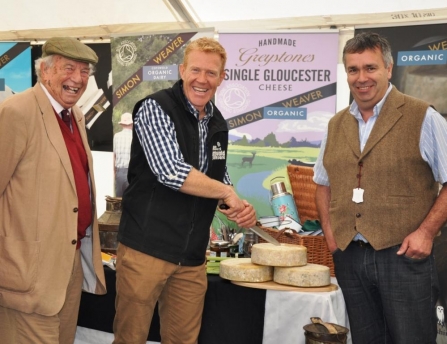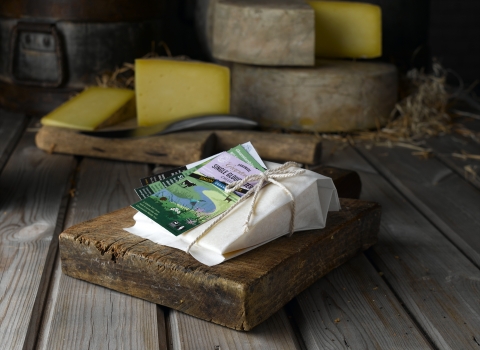In partnership with local farmer Simon Weaver, Gloucestershire Wildlife Trust has developed Greystone’s Single Gloucester Cheese - a handmade, wildlife friendly, organically produced dairy product.
As well as producing the milk used to make the cheese, the Gloucester cattle at Greystones nature reserve play a vital role in the management of the wildflower meadows which make Greystones a Site of Special Scientific Interest.
Greystone's Single Gloucester Cheese has a Protected Designated Origin (PDO). This means it can only be made here in Gloucestershire, and is one of only five producers in the world. Gloucestershire Wildlife Trust will receive a donation for every sale, enabling this nature reserve to manage a sustainable income for the organisation, benefiting wildlife and local people.

Joining forces with Simon Weaver to make this new organic cheese involves using Gloucester cattle that graze the Gloucestershire Wildlife Trust’s Greystones reserve in Bourton-on-the-Water.
Tom Beasley-Suffolk, the Farm’s nature reserve manager said: “the continuity of traditional hay making and grazing with cattle play a vital role in the management of the wild flower meadows at the Farm, so creating a PDO cheese is a great way for people to understand the connection between wildlife and food.”
These meadows have been managed in the same way for potentially as long as 350 years, and contain a wide range of native grasses and flowers which thrive in the low nutrient level environment. Due to the loss of hay meadows in the UK, the Trust is restoring other fields on the farm to improve the range of wildflowers and to increase the amount of habitat for animals such as insects. Bees are important for pollinating plants and other insects provide a food source for other animals.
The farm is carefully managed to produce optimum biodiversity - features such as the hedges, which are traditionally layed to create different habitats for the varying needs of different bird species, are maintained to achieve a wildlife rich landscape.

